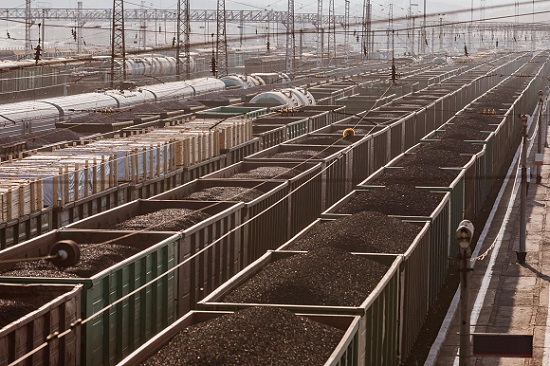

Global coal trade has really picked up pace in recent months, and is now fully back to pre-Covid levels.
In Jan-Dec 2023, global seaborne coal loadings increased by +5.8% yo-y to 1,339.5 mln t (excluding cabotage), based on vessel tracking data from AXS Marine.

In Jan-May 2024 the positive trend continued, with global coal loadings increasing by +2.5% y-o-y to 556.8 mln t, from 543.2 mln t in the same period last year.
In Jan-May 2024, exports from Indonesia increased by +8.2% y-o-y to 215.5 mln t, whilst from Australia were up +4.9% y-o-y to 142.1 mln t.
From Russia exports declined by -16.2% y-o-y to 67.2 mln t in JanMay 2024, from the USA increased by +2.4% y-o-y to 35.7 mln t, from South Africa declined -1.4% y-o-y to 25.2 mln t.
Shipments from Colombia increased by +17.9% y-o-y to 25.1 mln t in JanMay 2024, from Canada down by -5.4% y-o-y to 19.7 mln t, and from Mozambique by -7.7% t-o-y to 8.6 mln t.
Seaborne coal imports into Mainland China increased by +10.1% y-o-y to 160.5 mln t in Jan-May 2024, to India increased by +11.0% y-o-y to 105.7 mln t, to Japan declined by -7.4% yo-y to 45.3 mln t in Jan-May 2024, to South Korea -7.4% y-o-y to 45.3 mln t, to the EU down -43.6% y-o-y to 25.3 mln tonnes.
Australia is the second largest exporter of coal worldwide, with 25.7% of global seaborne coal exports in Jan-Dec 2023, quite far behind Indonesia which had a 36.9% share in Jan-Dec 2023.
Coal shipments from Australia have drastically affected in recent years by the country being backlisted by Mainland China, previously Australia’s largest customer.
That said, Australian exporters have been relatively successful in finding new markets limiting the impact on overall volumes.
In 2020, Australian coal exports fell sharply by -7.1% y-o-y to 361.2 mln t, from 388.9 mln tonnes in 2019, based on AXS Marine data.
In 2021, volumes out of Australia remained essentially flat at 356.9 mln t, or -1.2% y-o-y. In 2022, shipments declined further by -7.8% y-o-y to 329.1 mln tonnes. However, in 2023 exports from Australia rebounded by +4.6% y-o-y to 344.1 mln tonnes.
The main coal export terminals in Australia are Newcastle (138.1 mln tonnes loaded in Jan-Dec 2023), Gladstone (67.1 mln t), Dalrymple Bay (59.2 mln t), Hay Point (38.1 mln t), Abbot Point (32.9 mln t), Port Kembla (5.7 mln t), Brisbane (2.3 mln t), Whyalla (0.3 mln t).
The majority (56%) of coal volumes shipped from Australia in Jan-Dec 2023 were loaded on Panamax or Post-Panamax tonnage, with 40% of volumes shipped on Capesize vessels, and 4% on Handy or Supra tonnage.
There have been quite remarkable reshuffles in terms of trade patterns over the last few years, driven by political considerations.
Coal exports from Australia to Mainland China declined by -99.3% y-o-y in Jan-Dec 2021, to just 0.5 mln tonnes, from 66.6 mln t in 2020.
In Jan-Dec 2023, shipments from Australia to China surged back as relations normalized, to 56.0 mln tonnes, from 0.3 mln t in Jan-Dec 2022.

Pretty much the opposite happened to India. In 2021, Australia exported 70.1 mln t of coal to India, up +35.8% y-o-y, from 51.6 mln in 2020.
In 2022, however, shipments from Australia to India slowed down by -21.6% y-o-y to 54.9 mln tonnes, due to a greater availability of Indonesian coal.
In Jan-Dec 2023, Australia exported 49.4 mln t of coal to India, down -10.0% y-o-y. The top destination however is still Japan, with 103.0 mln tonnes in JanDec 2023, down -15.3% y-o-y, but still accounting for 29.9% of Australian coal exports.
China now accounts for 16.3% of Australia’s coal exports, with India 14.4%, Korea 10.1%, Taiwan 8.4%, Vietnam 5.8%, and the EU at 5.1%.
Source: Bancosta Research













